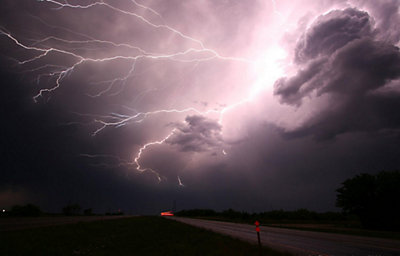History of Electricity

March 3, 2020
The history of electricity is pretty shocking! Today, we thought we’d talk about how your home is powered. It’s pretty electrifying stuff!
As you probably know, our modern understanding of electricity began with Benjamin Franklin tying a key to a kite string during a storm. But you may not know why exactly he did this…
Franklin had correctly thought that lightning was a form of electricity, and that iron rods could be used to attract electricity from lightning. But unfortunately, when he went to the Royal Society of London to try and get money for this electrifying experiment, history was just not ready for him yet!
The Royal Society of London literally laughed in his face. But of course, as we all know, Ben Franklin was the one laughing in the end!
Without the money to set up his complex iron rod experiment, instead Ben realized that he could do the same experiment fairly simply and cheaply…He just had to build a kite, tie a wire to the kite (to conduct electricity), and tie a metal key to the end of the string.
Franklin kept himself safe and dry by standing in a barn, and he let the kite fly outside the barn as the storm passed over. The wire piece in his kite drew electricity from lightning, and the electricity passed right down to the metal key! From there, it was rigged to enter a special jar that stores electric charges, called a Leyden jar.
So Ben had bottled electricity, and now he had proof about how electricity is conducted!
He had basically invented the world’s first lightning rod. Good for him, and the next time you pull out a $100 bill, you can think about that. (And save $20 on a tune-up from us!)
You may be wondering, how did this historic moment lead to electricity being able to power our homes and our lives today?
Well, building on the experiments of Ben Franklin, Michael Faraday discovered in 1831 that you can cause electric current without needing a source (like lightning) by moving magnets inside a copper coil. The fancy term for this is electromagnetic induction, but really all you need to know about it is, this was the discovery that allows us to generate power the way we do in this modern age!
Your last question might be, “That’s all well and good, but how do we get electricity to our homes?”
Well, electric generators (whether using natural gas, coal, or other technology like wind energy) are connected to each other all across the country, through an electrical system you may know as the “power grid.” So that means that if one electricity generating station goes down, you won’t necessarily lose electricity to your house, because another generating station far away can pick up the slack!
Once the electricity leaves the facility, what happens?
Well, electric current is sent through a transformer (just like what Michael Faraday made), and what the transformer does is, it increases the voltage so that electricity can travel a long way. It travels through transmission lines, and the voltage is slowly lowered at different points so it can travel on smaller and smaller power lines without overloading them.
Finally, the transformer outside your home gets the electricity! You might see your transformer on a pole or a big green box in your yard.
We’ve come a long way, baby, and we couldn’t have done it without these amazing inventors.
We offer prompt, efficient solutions at a fair price, and just like Benjamin Franklin, we think of ourselves as true pioneers in our field!
Related Reading
Subscribe to our e-Newsletter
Stay up-to-date on current news, promotions, and industry tips.
